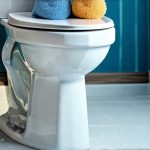The sudden, urgent need to pee when you’re away from a restroom is an incredibly common experience for women. It’s not just about inconvenience; it can cause significant anxiety, disrupt daily activities, and even limit social participation. Many factors contribute to these urges – everything from physiological differences to lifestyle choices and underlying health conditions. Understanding why this happens is the first step towards managing it effectively. This article will explore practical strategies to help reduce those frustrating pee urges when you’re out and about, empowering you to feel more confident and in control. We’ll cover behavioral techniques, dietary adjustments, and considerations for identifying potential underlying issues that might be contributing factors.
It’s important to remember that everyone is different. What works well for one person may not work as effectively for another. The goal isn’t necessarily to eliminate the urge altogether (that’s often unrealistic!), but rather to manage it, delaying or reducing its intensity so you can comfortably navigate your day. This means finding strategies tailored to your individual needs and lifestyle. This article provides a starting point – a toolkit of ideas – that you can experiment with and adapt over time. It is not intended to replace professional medical advice; if you have significant concerns about urinary frequency or urgency, consulting a healthcare provider is always recommended.
Understanding the Urgency: Why Women Experience Frequent Urges
Women are statistically more prone to experiencing frequent and urgent urination than men due to several physiological factors. The female urethra is shorter than the male urethra, meaning there’s less distance for urine to travel, potentially leading to quicker feelings of fullness and urgency. Additionally, hormonal fluctuations throughout a woman’s life – during menstruation, pregnancy, and menopause – can impact bladder control and urinary frequency. These changes influence the muscles that support the pelvic floor, which plays a crucial role in bladder function. Furthermore, childbirth can sometimes weaken these pelvic floor muscles, increasing susceptibility to urgency issues.
Beyond anatomical and hormonal factors, lifestyle habits also play a significant role. Consuming excessive amounts of fluids – particularly diuretics like caffeine and alcohol – naturally increases urine production. Similarly, certain foods (discussed later) can irritate the bladder, leading to increased urges. Stress and anxiety are also surprisingly potent contributors; when we’re stressed, our bodies often react with heightened sensitivity in various areas, including the urinary system. This means even a normal amount of bladder fullness might feel more urgent during times of stress.
Finally, underlying medical conditions can significantly contribute to urgency. Conditions like urinary tract infections (UTIs), overactive bladder (OAB), interstitial cystitis (IC), and diabetes can all impact bladder function and lead to frequent or urgent urination. It’s vital to rule out these possibilities with a healthcare professional if your urges are severe, persistent, or accompanied by other symptoms such as pain, burning, or blood in the urine. Ignoring potential underlying health issues could exacerbate the problem. If you suspect a deeper issue, consider exploring how to reduce ketones detected as part of your overall assessment.
Behavioral Techniques for Urge Management
Behavioral techniques form the cornerstone of many strategies for managing urinary urgency. Bladder training is a well-established method that involves gradually increasing the intervals between urination. This helps retrain your bladder to hold more urine and reduces the sensation of urgency. Here’s how you can approach it:
1. Keep a “voiding diary” for a few days to track when you urinate, how much you’re voiding, and the level of urgency you experience (on a scale of 1-5).
2. Start by trying to add 15-30 minutes to your usual urination schedule. If you typically pee every two hours, try stretching it to 2 hours and 30 minutes.
3. Gradually increase the intervals over time, aiming for a comfortable balance between holding urine without excessive urgency and avoiding accidents.
Another effective technique is urge suppression. When you feel an urgent need to urinate:
– Stop what you’re doing.
– Sit or stand still.
– Take slow, deep breaths.
– Mentally focus on something other than your bladder. (Count backward from 100, visualize a calming scene, etc.).
– Gently contract the pelvic floor muscles (Kegel exercises – see below).
These techniques require practice and consistency, but they can significantly improve control over urinary urges. It’s also important to avoid “just in case” voiding – going to the bathroom even when you don’t feel a strong urge. This habit weakens the bladder and reinforces the cycle of frequent urination. Practicing how to reduce tension can also help manage stress contributing to urgency.
The Role of Diet and Hydration
Diet plays a surprisingly large role in bladder health. Certain foods and beverages are known bladder irritants, meaning they can exacerbate urgency and frequency. Common culprits include:
– Caffeine (coffee, tea, soda)
– Alcohol
– Spicy foods
– Citrus fruits and juices
– Tomatoes and tomato-based products
– Artificial sweeteners
Identifying your personal triggers is key. Keeping a food diary alongside your voiding diary can help you pinpoint which foods seem to worsen your symptoms. Reducing or eliminating these irritants may significantly lessen urgency.
Hydration is equally important, but it’s about smart hydration. While drinking enough water is crucial for overall health, excessive fluid intake leads to increased urine production. Aim for a consistent level of hydration throughout the day, rather than gulping down large amounts at once. Spread your fluid intake evenly and avoid drinking large volumes before leaving home or engaging in activities where restroom access is limited. Focus on sipping water regularly instead of chugging it. Consider how to reduce inflammation through dietary choices for overall health.
Strengthening Your Foundation: Pelvic Floor Exercises (Kegels)
The pelvic floor muscles are vital for bladder control. Kegel exercises strengthen these muscles, providing better support to the bladder and urethra. They’re relatively easy to do anywhere, anytime.
1. Identify your pelvic floor muscles: Imagine you’re trying to stop the flow of urine midstream. The muscles you engage are your pelvic floor muscles. (Note: Don’t actually practice stopping urine flow during regular exercise, as this can be counterproductive.)
2. Squeeze these muscles for 3-5 seconds, then relax for 3-5 seconds. Repeat 10-15 times.
3. Perform Kegel exercises several times a day, incorporating them into your daily routine (while sitting at your desk, waiting in line, etc.).
Consistency is key with Kegels. It may take several weeks or months to notice significant improvement. There are also various tools and resources available – such as biofeedback therapy – that can help you ensure you’re performing the exercises correctly. Strong pelvic floor muscles provide a solid foundation for bladder control. If pelvic pain accompanies urgency, exploring how to reduce trigger points could be beneficial. Furthermore, understanding and potentially addressing kidney stone risk is important for overall urinary health. You might also consider reducing sympathetic nervous system overdrive to manage stress impacting bladder function.
It is important to reiterate that this information should not be considered medical advice. If you are experiencing significant urinary urgency or frequency, please consult with a doctor or other qualified healthcare provider to determine the underlying cause and appropriate treatment plan.





















